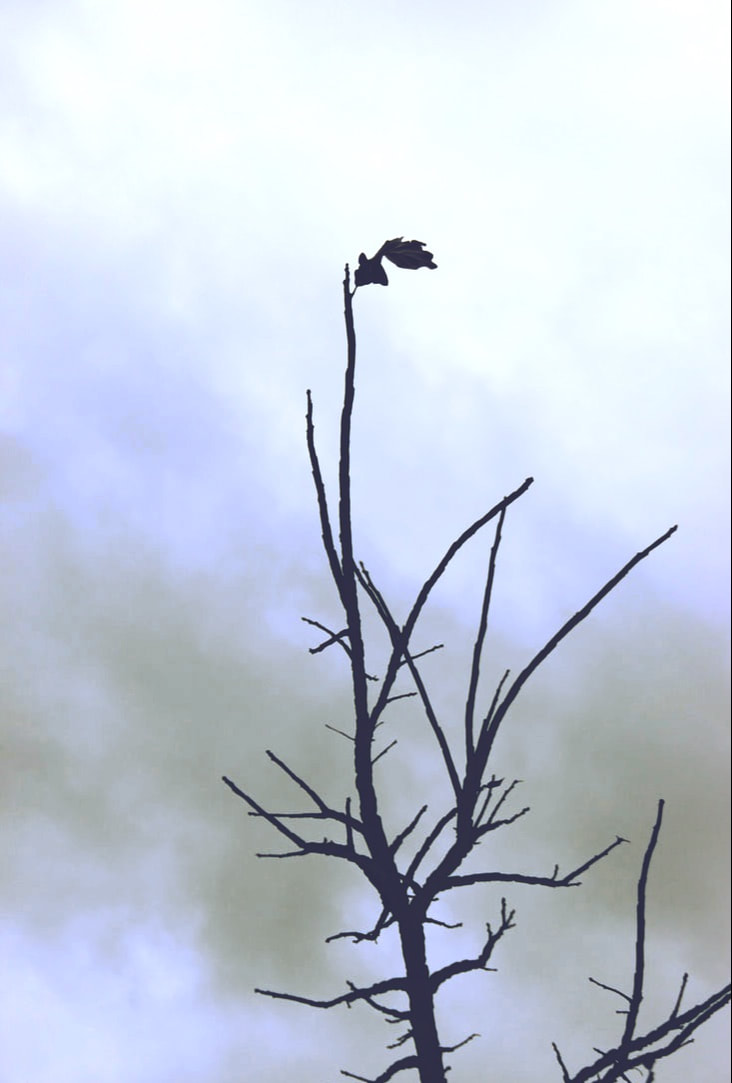A "Glazed" BirdOne hot, August afternoon, I heard a sickening thump on one of our downstairs windows. Even though there is white lattice-work between the panes of glass, when the light is just right, our picture windows still look like a piece of sky or forest to some poor bird busy chasing bugs or making its way across our yard. I ran out to find an inert, olive green body lying on the paving stones under the bird feeder, its wings drooping pathetically. As I tried to pick it up it fluttered out of my hand, and landed a few inches away. Good, it was only stunned, so I sat on the stoop to keep an eye on it. It would nod off after a while and revive a bit when I prodded it gently. I kept talking to it encouraging it to stay awake. I felt like I was in one of those old boxer movies - trying to keep my punch-drunk buddy from passing out. This went on long enough for me to get my camera and field guide.  The whiskers around its beak made me think of fly catchers but none of the descriptions fit with the yellow patches on the sides of the tail. After a while it perked up enough to fly onto the step of our camper, parked next to the back door. I brought it a small bowl of water but it wasn't interested. You can see the classic bird baby face in the picture below. Eventually it flew off into the trees behind the house. I could see it darting between the branches of an alder, as it if it was chasing flying insects. I sent some pictures to the McKellar Island Bird Observatory Facebook page and quickly got a response. This was a young American Redstart (Setophaga ruticilla). Probably a female, my guess. They belong to the warbler family and, like fly catchers, have whiskers which help them scoop flying insects into their beaks. All the characteristics of my little temporary patient fit the description in Peterson's field guide perfectly: "Butterfly-like; actively flitting, with drooping wings and spread tail." Mid-day Frog-nap A gray tree frog (Hyla versicolor) trying to blend in on our brown lawn chair during his rest time. They're nocturnal, so when we see them during they day, they are in rest mode. I think this may have been one of the cooler days in August. Even so, I'm amazed how these little guys can sit out in the open so long without drying out. The gray tree frog is noted for this. I suppose a useful trait if you spend most of your life in trees. I've been trying to learn how exactly these frogs are able to change their colours like this. These are the same creatures that have that lovely bright green colour when sitting on leaves. After much rummaging on line I came across "... colour change [is] mediated by synchronous intracellular transport of pigmented organelles in chromatophores." Yeah, right... in other words ... they somehow move little lumps of colour between their cells. But how do they know which colours to move where and how much? In all fairness this must be really hard stuff to figure out. Here's one article, about Japanese tree frogs blending in with heterogenous backgrounds, that shows the detailed work that needs to be done just study the "what", let alone the "how". There does seem to be consensus on the "why" though - temperature control (on cooler days the frogs turn darker to absorb more solar heat), UV protection, predator avoidance, and sexual signalling. All in the name of survival. Coming to a frosty end...
0 Comments
Your comment will be posted after it is approved.
Leave a Reply. |
AuthorI'm Elizabeth Pszczolko, a writer living in the woods outside Thunder Bay, Ontario. As a child, I used to keep scrapbooks of nature stuff - drawings, musings, poems. This is my grown up (I use the term loosely) version of those long lost works. For more on what inspires this blog, please see the About page. Archives
November 2023
|
Proudly powered by Weebly






 RSS Feed
RSS Feed